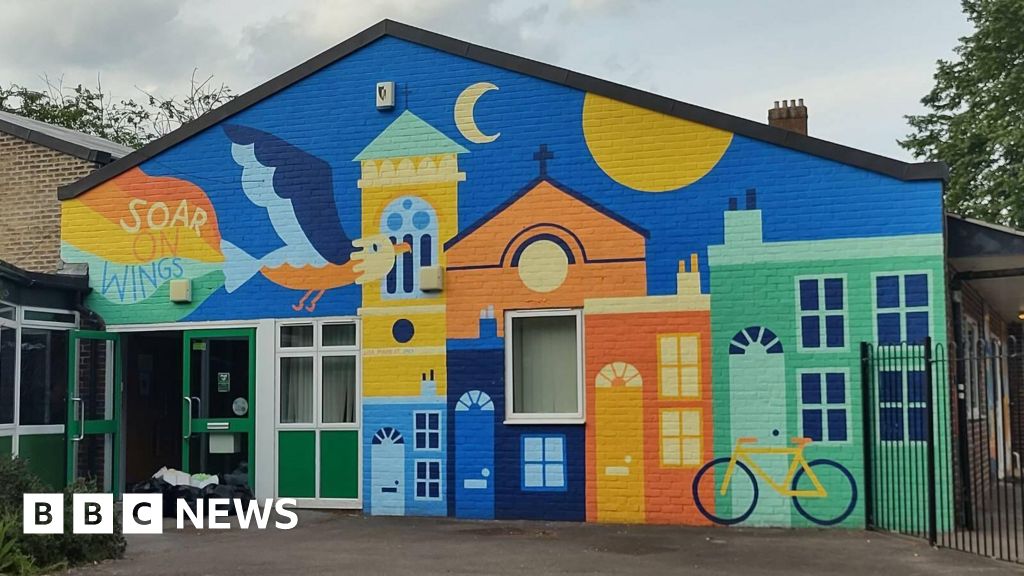- Latin America
Mid-tier UK law firms hand big pay rises to junior lawyers
时间:2010-12-5 17:23:32 作者:Music 来源:Americas 查看: 评论:0内容摘要:WASHINGTON (AP) — U.S. authorities informed some migrants of plans to deport them to Libya, a country they are not from and that has aWASHINGTON (AP) — U.S. authorities informed some migrants of plans to deport them to Libya, a country they are not from and that has a
Raphael’s semifinal performance passed without disruption.has competed in Eurovision for more than 50 years and won four times. But last year’s event in Sweden drew large demonstrations calling for Israel to be kicked out of the contest over its conduct in the

The Oct. 7 cross-border attacks by Hamas militants killed 1,200 people, and roughly 250 were taken hostage into Gaza. More than 52,800 people in Gaza have been killed in Israel’s retaliatory offensive, according to the territory’s health ministry.About 200 people, many draped in Palestinian flags, protested in central Basel on Wednesday evening, demanding an end to Israel’s military offensive and the country’s expulsion from Eurovision. They marched in silence down a street noisy with music and Eurovision revelry.Many noted that Russia was

after its 2022 invasion of Ukraine.“It should be a happy occasion that Eurovision is finally in Switzerland, but it’s not,” said Lea Kobler, from Zurich. “How can we rightfully exclude Russia but we’re still welcoming Israel?”

Pro Palestinian protesters demonstrate, during the opening ceremony of the 69th Eurovision Song Contest, in Basel, Switzerland, Sunday, May 11, 2025. Sign read, ‘11th Commandment: Israel is allowed to do everything.’ (Georgios Kefalas/Keystone via AP)
Pro Palestinian protesters demonstrate, during the opening ceremony of the 69th Eurovision Song Contest, in Basel, Switzerland, Sunday, May 11, 2025. Sign read, ‘11th Commandment: Israel is allowed to do everything.’ (Georgios Kefalas/Keystone via AP)New Englander Joseph E. Clapp’s beautiful birdcage is another standout. Made of Peruvian mahogany and whalebone with petite brass pins, it’s a marvel of construction. Clapp was a master mariner who worked on whale boats in the 1850s. When he retired, he created a bird sanctuary in Peru. He finally returned to Nantucket, where he was often seen strolling the streets with his pets in their cages.
A drawing called “Devil House” conveys what it means when home is a literal prison cell. Incarcerated in a Huntsville, Alabama, prison, Frank Albert Jones started drawing with the red and blue pencil stubs discarded by inmate bookkeepers. A recurring theme is enclosed rooms surrounded by jagged wiry barbs he called “devil’s horns,” with grinning spirits. He frequently includes a clock; for many years, his cell faced the penitentiary’s clock tower.Jones’ signature on “Devil House” includes his neatly printed prison number, 11451.
grew up on Louisiana plantation and became an acclaimed self-taught artist. Starting in her 50s, she created a visual history of everyday life there — from laundry days to weekend parties — as she remembered it in the early 1900s. Two of her untitled works are in the exhibition; one shows people gathering at an outdoor funeral, while the other depicts a courtroom scene.Another painting in the exhibit is of
- 最近更新
- 2025-07-07 05:49:27guide Step-by-Step Guide to Medicare Initial Enrollment
- 2025-07-07 05:49:27guide Understanding Part D Prescription Plans
- 2025-07-07 05:49:27Death toll reaches at least 200 in Nigerian town submerged in floods
- 2025-07-07 05:49:27Ser católico en una universidad secular puede ser un desafío; otros lo ven como una bendición
- 2025-07-07 05:49:27guide Dual-Eligible Medicare & Medicaid Coverage
- 2025-07-07 05:49:27Authorities determine the cause of death of a man whose burned body was found on Stone Mountain
- 2025-07-07 05:49:27The best barefoot shoes for running
- 2025-07-07 05:49:27Ser católico en una universidad secular puede ser un desafío; otros lo ven como una bendición
- 热门排行
- 2025-07-07 05:49:27EyeVac Pro Touchless Automatic Dustpan $179$199Save $20with coupon
- 2025-07-07 05:49:27Alcaraz gives point to Shelton on racket fling
- 2025-07-07 05:49:27How to save big on your car insurance
- 2025-07-07 05:49:27Authorities determine the cause of death of a man whose burned body was found on Stone Mountain
- 2025-07-07 05:49:27How much should you have in your 401(k)? How your balance compares to others by age
- 2025-07-07 05:49:27USA TODAYStorm tracker: Andrea weakens in Atlantic, system in Pacific could become tropical storm
- 2025-07-07 05:49:27Large Room Air Purifier$45$100Save $55with coupon
- 2025-07-07 05:49:27Women still occupy minority of senior legal roles despite progress at earlier stages
- 友情链接
- Record floods kill four and devastate eastern Australia ‘Farcical’: Venezuelan opposition denounces arrest before weekend vote Trump visits the Middle East: All the countries visited by US presidents NPR sues Trump administration for cutting US federal funding Towns, Knicks stun Pacers in Game 3 of NBA East finals Uganda targeting LGBTQ community with hatred and violence: HRW Japan faces a ‘rice crisis’ as price nearly doubles for food staple How a ‘Gold Mafia’ is looting Southern Africa, washing dirty cash 100 photos from Palestine In rural Pakistan, bull racing draws crowd in cricket-loving nation Local communities vow to fight new Panama Canal reservoir WHO members adopt landmark pandemic agreement in US absence Foreign journalists must not abandon their Palestinian colleagues in Gaza Pope Leo prays for China’s Catholics, a thorny issue in his papacy EU vows to defend interests after Trump threatens 50 percent tariffs Are Palestinian groups in Lebanon about to give up their weapons? In rural Pakistan, bull racing draws crowd in cricket-loving nation How common is Israel’s use of human shields in Gaza and the West Bank? Over 400 Rohingya feared drowned in two shipwrecks off Myanmar coast: UN US Steel shares soar on Trump’s apparent blessing for deal with Nippon Parallel economy A pontiff from Chiclayo: How Peru is reacting to Pope Leo XIV Thunder-Timberwolves: SGA scores 40 as OKC win Game 4 in NBA West finals Chaos erupts as Palestinians rush to aid site after months of blockade What is famine, and why is Gaza at risk of reaching it soon? Heavy rains lash Mumbai amid India’s ‘earliest’ monsoon in years Argentinian judge withdraws from a negligence trial about Maradona’s death Afghans face deepening humanitarian crisis on return home Australia dust storm turns town orange US pauses student visa processing amid plans to up social media vetting
